How the world's first computer saved from oblivion in a landfill
- Transfer
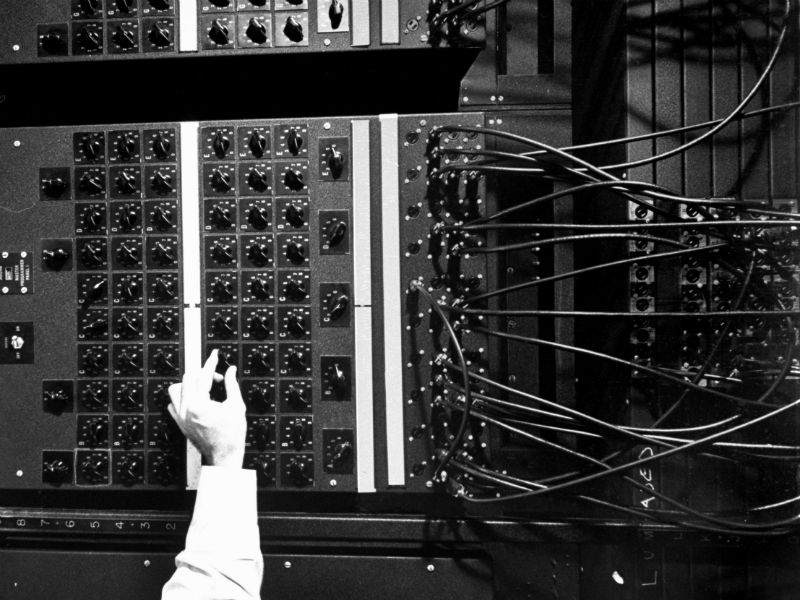
It is difficult to surprise eccentric billionaires with something, therefore, when receiving vague tasks, their assistants should always think big. People working for Ross Perot did just that when their boss announced in 2006 that he wanted to decorate his office in Plano, Texas [a suburb of Dallas — hereinafter approx. perev. ] "Relics" from the world of computing. Knowing that a few pathetic Apple I and Altair 880 would not be enough to satisfy the demands of the former presidential candidate, his employees decided to aim for a larger fish and find a large block from ENIAC (Electronic Numerical Integrator And Computer, Electronic Numeric Integrator and Calculator).
ENIAC, 27 ton tangleelectronic tubes and diodes covering an area of 1800 square feet [approx. 167 sq.m.], is considered the first real computer in the world (although some call this statement controversial). The part of this computer that Perot’s helpers found and restored with love is now being put on public display at the same military base for the first time, where ENIAC has practically decayed, being left in oblivion.
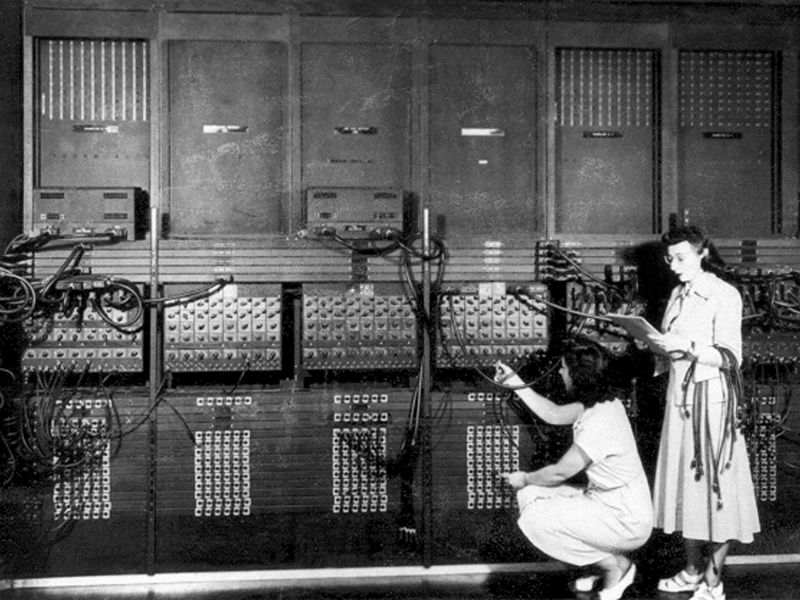
Computer ENIAC, 1946
ENIAC was conceived in the midst of World War II as a tool that can help gunners calculate the flight paths of shells. Although its assembly began a year before Day D [the day the Allied army landed in Normandy, June 6, 1944], the computer first started working only in November 1945, when the thunder of guns of the US armed forces had already subsided. But the military continued to see prospects for using ENIAC, as the Cold War began - the creators of the first hydrogen bomb, who needed to test the capabilities of their early developments, took a machine with 17,468 electron tubes. Scientists from Los Alamos later stated that they could not have been successful without the incredible computing capabilities of ENIAC: the machine could perform 5,000 operations per second - this made it thousands of times faster than the electromechanical computers of the time (by the way, iPhone 6 can do 25 billion operations per second).
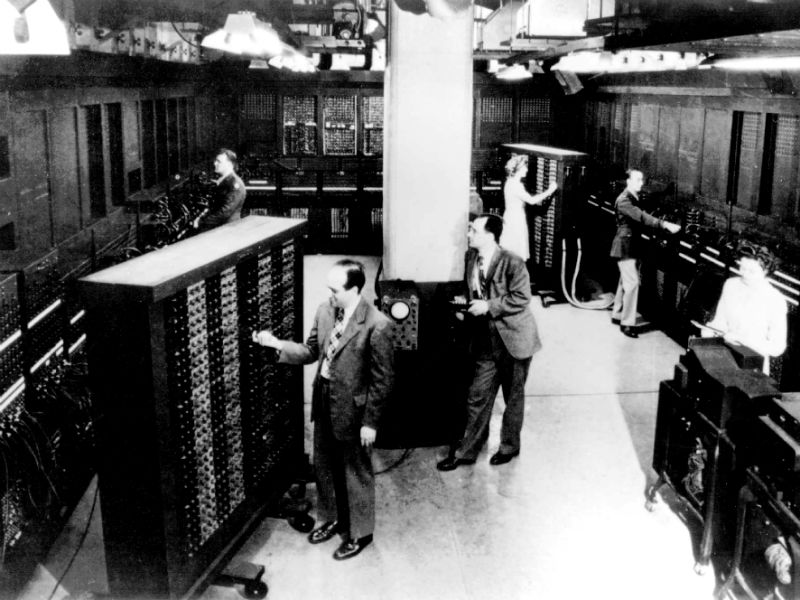
J. Presper Eckert and John W. Mockley with an ENIAC computer. University of Pennsylvania, 1946
However, when the army declared ENIAC obsolete in 1955, the historic invention was treated without due respect: 40 computer panels, each of which weighed approximately 858 pounds [ almost 390 kg. ], divided and stored without much accuracy. Part of the hardware remained in the hands of those who appreciated the importance of the machine: for example, engineer Arthur Burks donated his panel to the University of Michigan, and the Smithsonian Institution tried to acquire a pair of panels for its own collection. But, unfortunately, Libby Kraft, director of Perot's special projects, had to admit that most of the ENIAC disappeared into scattered warehouses almost like the Ark of the Covenant at the end of Indiana Jones: Looking for the Lost Ark.
Lost under tons of papers
“As time went on, new employees who came to the warehouses inherited records that weren’t as good as they should have been,” said Kraft, who was the main person responsible for finding what was left of ENIAC. “And when they needed extra space, they could very well pay attention to a pile of metal about which they knew nothing. And then they could easily get rid of it. ”
Kraft was on the verge of stopping the search when an army official found documents showing that some of the panels had once been transported from a test site in Aberdeen (Maryland) to Fort Sill in Oklahoma to the War Museumfield artillery. When Kraft turned to Fort Sill to inquire, the museum curator was shocked to find out that the museum had the world's largest ENIAC unit - a total of nine panels, all of which were stored in nameless wooden boxes that no one had already opened many years. Fort Sill’s representatives did not know how they had almost a quarter of the ENIAC computer, part of which was brought to Oklahoma from the Military Warehouse in Anniston (Alabama).
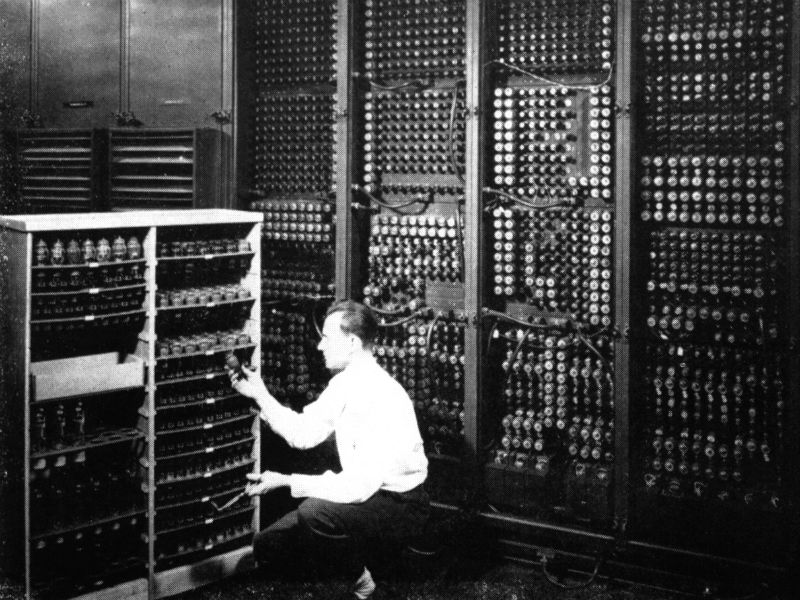
ENIAC Technician Changes Electronic Lamp
Kraft concluded a deal according to which her company could borrow panels from Fort Sill in exchange for a promise to restore the device to achieve external resemblance to its former greatness. The restoration project was led by Dan Gleason, an engineer at Perot Systems, who had no experience repairing vintage computers. Gleason quickly enough found out that he could not force the resulting part of ENIAC to perform real operations - for this all 40 panels would be needed, not to mention the thousands of new components and technical knowledge that had long been lost. But he was able to make the computer at least look so that it became clear: to calculate the ideal trajectory of a projectile from a howitzer is not an easy task.
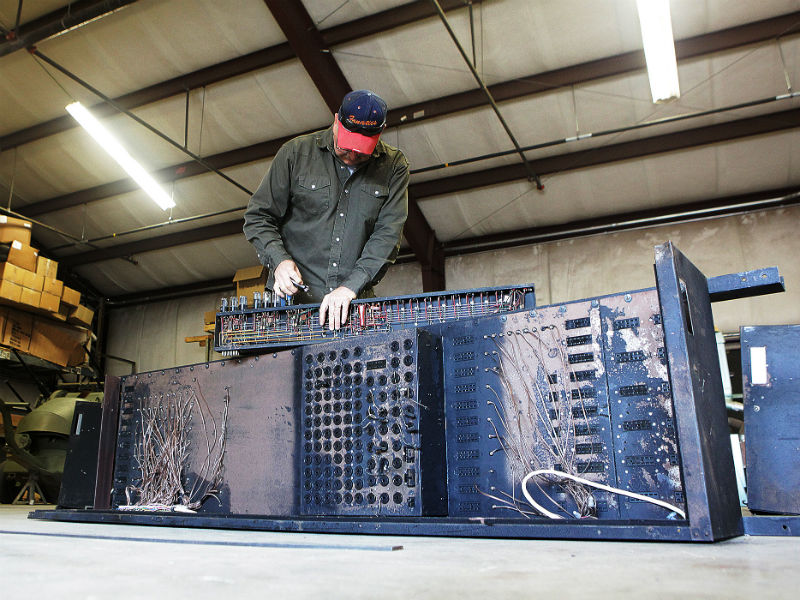
Restoration and homecoming
First of all, Gleason tried to remove the cosmetic defects of the panels - the metal of the outer shell was very rusty (one of the eight panels was so badly damaged by moisture that it could not be saved). Gleeson sanded the panels with a sandblasting machine, then coated them with black high-temperature paint, which he purchased from dozens of car service stores and service stations. When the paint dried, Gleason and his son, Jonathan, painstakingly soldered 600 new lamps to the panels. The lamps were connected to a motion sensor, so they began to light up erratically when a visitor appeared. Gleason also made a large steel frame, which prevented the panels from tipping over, and the protruding electronic lamps protruding on the sides - to break (not to mention the fact that the falling panel could do with a person who, by unfortunate accident, was nearby).

The renewed ENIAC took its place in the Perot office in 2007, but relatively few could see it there - the office was in a secure room, which was not allowed for outsiders, although several enthusiasts were able to get permission to conduct special excursions . But not so long ago, Perot, which Dell absorbed in 2009, announced that it would soon embark on a new phase of the search - so it was time to return the panels to Fort Sill. Plast history of computers weighing 6,864 pounds [ more than 3,113 kg.], wrapped in mountains of bubble wrap, made the return trip to Oklahoma in late September. Since Dan Gleeson prudently used simple “blade” connectors and widespread 12-channel DMX controllers to connect the lamps, the Fort Sill Museum put the structure into operation without difficulty. The hardest part was to assemble a steel frame, which turned out to be more difficult than the museum staff had expected.
ENIAC panels began to be shown to visitors to Fort Sill in late October, although the exhibit still requires some restoration work. The museum, in particular, is in the process of acquiring additional electronic lamps to give the device a more “natural” look. Panels, of course, will never be able to make real calculations, but this is probably for the best. Even during its active use, ENIAC had to spend as much as 30 milliseconds to calculate the square root of a complex number. Who would have the patience for it now?
Related posts and links:
